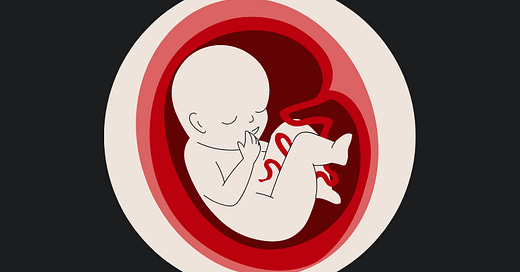Elizabeth Nolan Brown recently wrote an article for Reason arguing that government policies can’t reverse declining birth rates. It fits into the recent resurgence of natalism, the view that having children is a good thing and that we should try to achieve a high(er) birth rate.1 At first glance it’s the usual Reason article about why government intervention = bad (applied to the topic of the hour), but by the end Brown seems sceptical that any idea, interventionist or not, would have a massive impact on birth rates. I think she’s mostly right but I also think that everyone seems to approach this topic in a confusing and unhelpful way.
The problem with natalist discourse is that everyone seems to slip between talking about one of three different groups of people while insisting that they’re always talking about everyone. As far as I can tell, if your goal is to get people to have (more) kids then there are three distinct groups of people that you need to consider:
People who want (more) kids but aren’t having them and the reasons why are easy to address.
People who want (more) kids but aren’t having them and the reasons why are difficult to address.
People who don’t want or can’t have (more) kids.
The first group includes people that would have (more) kids if only some easily removable barrier were removed. They include people who would like to have (more) kids but aren’t able to get enough time off or feel like they can’t afford to raise a child. Governments can solve these problems with the welfare state. Paid parental leave, paid child care and cash benefits can allow people in this group to achieve their desired family size. Hence why these sorts of policies do, in fact, raise birth rates. I would also include people with easily treated infertility in group one too.
People in the second group would like to have (more) kids but it’s hard to address the reasons why they aren’t having them. This includes people who aren’t having kids because they don’t feel like they or their partner is ready to become a parent, people who would like to have kids but want to prioritise other things and people with difficult-to-treat infertility. Excluding the complex infertility cases, this is the group that Brown spends much of her article talking about. Child welfare policies really won’t do much to raise birth rates among people in group two. As far as I can tell, there is no good and reliable way to significantly raise birth rates among group two. Governments can run parenting education programs and fund fertility treatment research. Natalist authors can write books and op-eds trying to win over people who worry about their parenting skills or whether they’ll be able to ‘have a life’ after having kids. But none of these things seem to move the needle very far.
The third group of people consists of those who can’t or don’t want to have (more) kids. It’s just not something that they plan on doing with their life. There isn’t much that the natalist can do here, at least in the short term. Helping people have the kids that they genuinely want to have is one thing, but getting people to want to have kids or resolve absolute infertility is another matter entirely. I honestly have no idea how natalists could go about doing those things in a robust and effective way.
Once you understand these three groups the arguments between natalists become a lot easier to follow. When right-wing, anti-welfare natalists say that child benefits are ineffective they’re wrong about group one and right about groups two and three. Vice versa for pro-welfare natalists.
It also becomes clear why governments and natalist activists can’t have a massive impact on birth rates. They can make it easier for people to have the kids that they want to have, but there are lots of cases where they can’t do much and there are plenty of people that can’t or don’t want to have kids.
Disclaimer: I don’t have any particularly strong thoughts about the idea itself.




